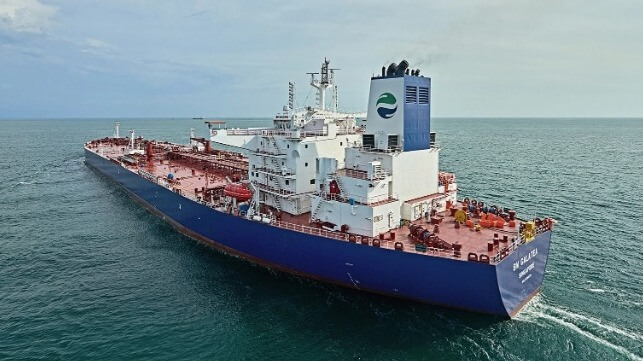Hafnia and DNV Test Monitoring Systems for Underwater Noise

One of the growing areas of concern, and likely future regulation, is underwater noise due to its potential impact on marine wildlife. In a pioneering program, tanker operator Hafnia and DNV have partnered to test new systems that could contribute to future vessel design and operations to reduce the levels of underwater noise emitted by vessels.
“Underwater noise is an often-overlooked challenge that affects marine life, and this project with DNV helps us take an important step toward protecting the oceans we depend on,” said Ralph Juhl, EVP, Technical Director at Hafnia. “By acting early, we are building knowledge that will guide vessel design and operations moving forward in a more sustainable manner.”
The pilot involves two vessels, the Hafnia Excel (74,547 dwt) and the Hafnia Osprey (49,999 dwt), where onboard monitoring systems are being installed during drydocking. The Hafnia Excel is an LR1 tanker built in 2015, while the Hafnia Osprey is an MR tanker also built in 2015.
The companies explained that the systems will provide continuous measurements of underwater noise and insights into how normal ship operations impact the marine environment. Alongside onboard monitoring, external hydrophone (underwater microphone) measurements will also be carried out to add valuable reference data.
“This pilot represents a technically significant step toward quantifying and verifying the reduction of underwater noise emissions across the global fleet. The system introduces a new way of tracking and verifying the impact of noise-reducing measures,” said Øystein Solheim Pettersen, Head of Section for Noise and Vibration in DNV Maritime Advisory.
The goal is to develop a Noise Management Plan for Hafnia’s vessel types. This will not only help in staying ahead of compliance requirements but also guide decisions on possible noise-reducing measures and future shipbuilding specifications. The project is expected to generate critical insights for both Hafnia and DNV.
This program is the latest in a series of steps being taken by the tanker operator to enhance fleet performance and stay ahead of emerging regulations. In the first half of 2025, the company undertook upgrade work on thirteen vessels, including steps such as application of high-performance silicon-based hull coatings, the introduction of propeller enhancements with graphene coatings, energy-saving propeller boss cap fins, and the installation of Mewis Ducts/Wartsila EnergoFlow to reduce energy loss from cavitation and wake turbulence to improve fuel efficiency and reduce emissions.
They note that underwater noise from ships is increasingly seen as a key environmental challenge. Some areas already limit vessel noise or are offering reduced port fees for quieter ships. International authorities, including the IMO, are also moving toward stricter rules governing underwater noise.
